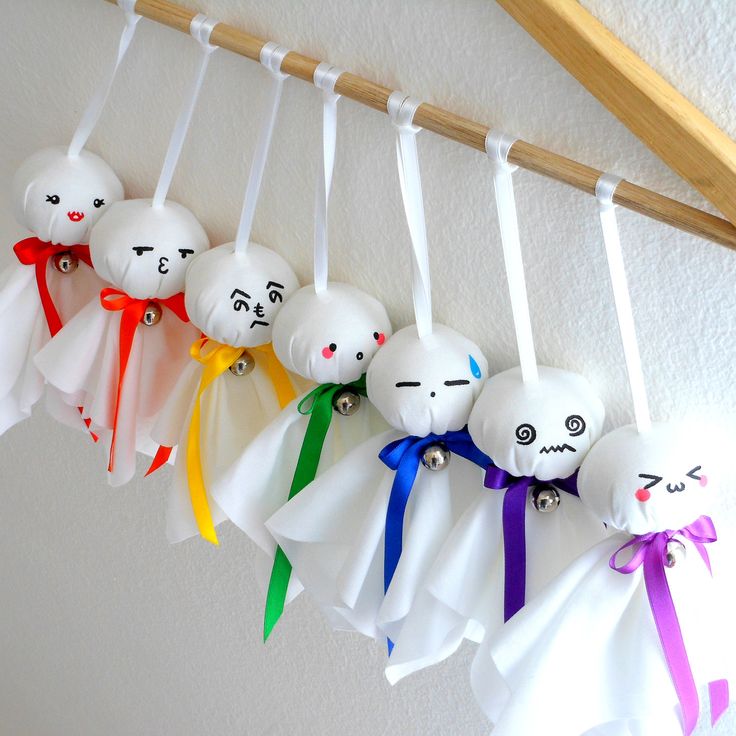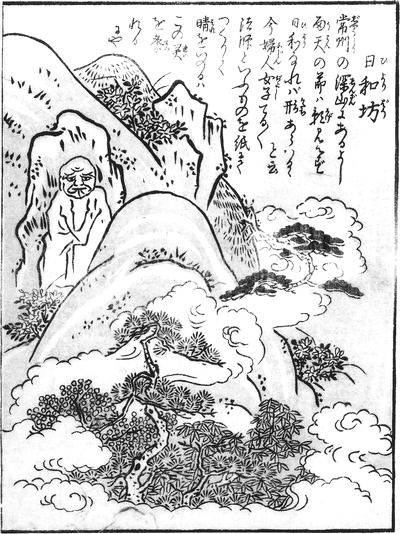A Teru Teru Bozu (てるてる坊主; literally “shine shine monk”) is a little traditional handmade doll made of white paper or cloth that Japanese farmers began hanging outside of their window by a string during the Heian perion (749 – 1185). To a western chind, the Teru Teru Bozu looks very similar to a ghost, and one may make some of these to be used at Halloween. The doll is supposed to have magical powers to bring good weather and to stop or prevent a rainy day. “Teru” is a Japanese verb which describes sunshine, and a “bōzu” is a Buddhist monk, or in modern slang, “bald-headed”; it is also a term of endearment for addressing little boys.

The tradition of hanging a Teru Teru Bozu doll outside as a prayer for sunshine a tradition that nearly all children in Japan are familiar with, particularly when sportsday (undokai) comes around in the Japanese school year. Japanese sportsdays are usually hugely rehearsed showcases of student achievement throughout the year with the usual sporting activities such as races and games intermingled with class-based dances and cultural activities. The amount of effort and anticipation Japanese children show before sportsday causes many of them to pray for good weather by making a Teru Teru Bozu.
Teru Teru Bozu nursery rhyme
Often when children hang their doll, they will sing the Teru Teru bozu nursery rhyme. By western nursery rhyme standards, this Japanese song can seem a little morbid as it threatens the doll with getting their head cut off if it doesn’t cause nice weather. This is often the case with Japanese children literature however and can be put down to differences in culture.
The lyrics, taken from JapaneseMythology, are as follows:
| Japanese: てるてるぼうず、てるぼうず 明日天気にしておくれ いつかの夢の空のように 晴れたら金の鈴あげよてるてるぼうず、てるぼうず 明日天気にしておくれ 私の願いを聞いたなら 甘いお酒をたんと飲ましょてるてるぼうず、てるぼうず 明日天気にしておくれ それでも曇って泣いてたら そなたの首をちょんと切るぞ | Romaji: Teru-teru-bōzu, teru bōzu Ashita tenki ni shite o-kure Itsuka no yume no sora no yō ni Haretara kin no suzu ageyo Teru-teru-bōzu, teru bōzu Ashita tenki ni shite o-kure Watashi no negai wo kiita nara Amai o-sake wo tanto nomashoTeru-teru-bōzu, teru bōzu Ashita tenki ni shite o-kure Sorete mo kumotte naitetara Sonata no kubi wo chon to kiru zo | Translation: Teru-teru-bozu, teru bozu Do make tomorrow a sunny day Like the sky in a dream sometime If it’s sunny I’ll give you a golden bell Teru-teru-bozu, teru bozuDo make tomorrow a sunny day If you make my wish come true We’ll drink lots of sweet rice wine Teru-teru-bozu, teru bozu Do make tomorrow a sunny day But if the clouds are crying (it’s raining) Then I shall snip your head off |
History

According to Hyakumonogatari Kaidankai, the legend of the Hiyoribo Weather Monk is passed down many generations in Japan and is said to originate in the mountains of Hitachi-no-kuni. Hiyoribo is said to be a yokai (Ghost) who brings sunny weather, and who cannot be seen on rainy days. Toriyama Seiken illustrated the Hiyoribo in his picture-scroll “Supplement to the Hundred Demons of the Past,” and explained that this yokai was the origin of teruteru bozu. He said that when children hang up teruteru bozu and pray to them to bring sunshine into the rain, it is actually the spirit of the Hiyoribo that they are praying to.
The Teru Teru Bozu shape is also found in modern pop culture through the Pokemon Castform (pictured below). Castform has power over the weather in a very similar way to the original dolls.

Featured image taken from HachidoriArt and you buy it here


One comment
These are really cute and colourful